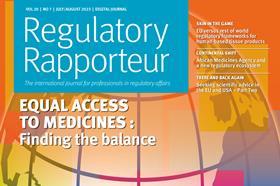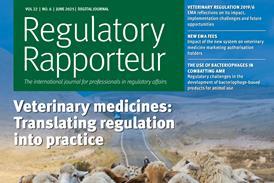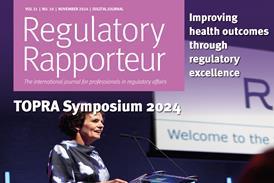
Regulatory Rapporteur
July/August 2023 | Volume 20 | No.7
This edition of TOPRA’s Regulatory Rapporteur journal explores some of the challenges faced by regulatory professionals around the world; from the African regulatory ecosystems, to health technology assessment (HTA), and the ongoing impact of the EU Medical Devices Regulation (MDR) on clinical studies and data.
It is widely known and accepted that regulatory affairs is in a constant state of flux with changes and amendments being developed apace and implemented as knowledge around new and existing products evolves. One of the more significant changes in regulatory requirements made recently has been the implementation of the MDR. Vinetta Brew takes a detailed look at Andrew Jackson’s TOPRA MSc dissertation and brings the regulations up to date with regards to some of the practical challenges that the early adopters of MDR have faced. In addition to the costs associated with the MDR, it has still not become clear whether its implementation will delay the approval of new technologies, particularly artificial intelligence.
Similarly, the article by Suzanne Jenkins et al considers the sponsor’s perspective on clinical trials conducted under the In Vitro Diagnostics Regulation (IVDR) over the past year. The authors explore the requirements for interventional studies for IVDR including when clinical performance studies may be required. Not surprisingly, the implementation of IVDR has both beneficial and negative effects on manufacturers seeking to develop and register new products and test kits.
Some recent and significant developments in the regulatory frameworks in African nations is reported by Ian Hudson and colleagues, who discuss the establishment and successes that the African Vaccine Regulatory Forum has enabled, particularly its expansion to cover other medicinal products. This framework covers not just product registration, but also manufacturing quality issues such as following good manufacturing practice. As the regulatory landscape rapidly continues to evolve in this region, the authors note that creation of the African Medicines Agency (AMA) has enabled 55 individual nations to cooperate under a single framework.
Simon Hoffman continues the theme of regulatory challenges, providing a personal perspective on the implementation of HTA regulations. He takes a look at the requirements in the EU and reflects on the differences in requirements and implementation in a range of countries including Japan, South Korea, China, India, USA and Australia. Hoffman provides an enlighten narrative on whether some the differences he has experienced are based on differences in requirements, or interpretation.
As we live longer and rely in medicinal products to stay well and active, it’s inevitable that many of us will suffer hearing loss (up to 20% of us over the age of 65). Blathnaid Feldman considers some of the challenges and opportunities that hearing aid manufacturers face in the EU. From their marketing as consumer electronics to developments in battery technology, WiFi and Bluetooth, Feldman shows how the complex range of regulations can be conflicting and challenging to navigate when the primary goal of manufacturers is to provide audibility, comfort, and speech.































